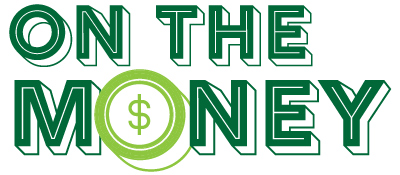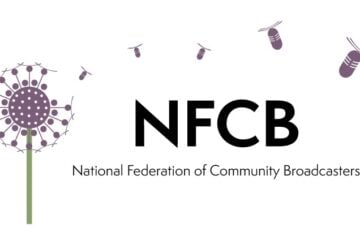Why independent documentary filmmakers want new and improved funding models

matt_benoit / iStock
Katja Esson’s filmography is perfect for public television: It’s a body of work that profiles ordinary people who, faced with hardships and inequitable systems, do their best to live their best lives.
A couple of her films have aired on WNET in New York City. Her 2001 documentary Vertical Traveller featured a Cuban exile, Aurelio Alvarez, who discusses the importance of elevators in New York City. Searching for Sense, a 2002 film, covered artists and musicians who created a mural to honor 9/11 victims. Internationally, Esson’s films have aired on Arte, a public broadcasting channel in Europe that occasionally partners on productions for PBS.
But Esson’s credentials, and her current film about the “renovation” of a public housing project in Miami’s Liberty City neighborhood, have not made it any easier to raise money for her work. If anything, the process has become more cumbersome.
“I know films that have taken 10 years because of the fundraising,” Esson said. She self-financed Razing Liberty Square for two years before securing financial support from major backers.
Out of all the barriers public television filmmakers face, from creative struggles to deadline pressures, there is no greater challenge than raising money to produce a documentary. Financial problems are ubiquitous. Some interviewees for this story laughed or sighed when asked what they do to raise money. Their answer: What don’t they do?
Self-financing is common. They might accept loan offers from family and friends.
Awards from festivals, grants from foundations and gifts from wealthy donors help, though these need to be pieced together to move a project forward. Funds from these types of sources tend to come through after someone else has backed your project. Many filmmakers say the hardest part of any documentary project is securing the first two grants, a signal that the film is worthy of additional funding.
The federal government sometimes pitches in through the National Endowment for the Humanities or the National Endowment for the Arts, though pursuing those grants can take years and well-placed connections.
CPB supports filmmakers through multiple channels. The Independent Television Service, which operates Independent Lens, received a TV programming grant of nearly $15.2 million in fiscal year 2020, according to grant listings posted on CPB’s website. Grants to the program consortium organizations that make up the National Multicultural Alliance totaled more than $9 million, a 37% increase from previous levels. PBS’ National Program Service, which includes general audience and children’s programming, received nearly $26.2 million.
CPB spent about $71 million on television programming in fiscal 2020, according to its audited financial report, a decrease from about $79 million in FY19. The corporation’s operating budget for television in FY2021, which ends Sept. 30, provides nearly $75 million.
Kathryn Washington, SVP of television for CPB, said the corporation’s investments in film production have “basically been level in the past five years,” noting in a statement that the corporation’s $445 million federal appropriation has been flat for a decade. “Further, because of our limited resources, it is important for a project to be developed to some extent and to have distribution before we would fund it,” she said. CPB monitors broad investments in film production by its funding partners but does not track funds that its grantmakers award directly to filmmakers, according to a spokesperson.
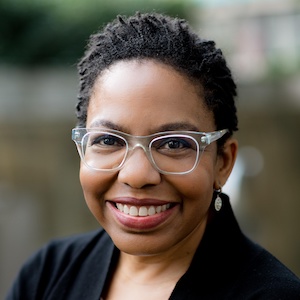
To get a film project through the development stage, filmmakers need early backers or bridge grants, and the hunt for those funds is intensely competitive. A report published July 19 by the Center for Media & Social Impact concludes that increased funding “is needed now, and on an ongoing basis, for independent filmmakers and the organizations that directly support their work.”
With CPB’s appropriation limited to $445 million or less since 2012, public TV is losing capacity to fulfill its mission to serve audiences whose stories are under-represented in media, according to the report, Stories for a Stronger Nation, which was based on confidential interviews with 57 filmmakers, public TV decision-makers and other stakeholders. The economic fallout from the pandemic has hit independent filmmakers especially hard.
To ITVS Board Secretary Sharon La Cruise, a co-author of the report and a filmmaker herself, the situation is frustrating and outrageous.
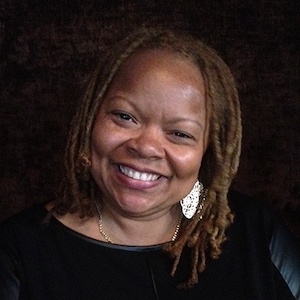
“As a country, we’re OK with people being starving artists. That is supposed to be the price you pay for your art,” she said. “It’s sad, because there are a lot of talented people who have that passion and are very much connected to the mission of public television who have to make that hard decision of walking away from the field.”
Grantmakers at multiple funding organizations told Current they’re working to provide additional support through five- and six-figure grants. Some provide backing for research and development of early-stage projects; others target their support to women and minority filmmakers. Organizations like Catapult Film Fund and the International Documentary Association have been leading these efforts. Frontline, the PBS investigative journalism series, is also pitching in.
But some filmmakers and funders believe that it will take a larger, potentially revolutionary effort to make the financing of public television documentaries less burdensome and more equitable. If it’s not fixed now, they said, it’ll only be harder to fix later.
Urgent need for early funding
Esson, born and raised in Hamburg, Germany, is based in Miami. Razing Liberty Square, her current production, is about a majority Black neighborhood that is home to one of the oldest housing projects in the country. Google “Liberty Square” and one of Disney World’s theme parks may come up first. Google again and add the word “Miami.” Prompts like “how dangerous is Liberty City” and “where is the hood in Miami” appear.
As sea level rise caused by climate change threatens Miami’s beachfronts, developers and property owners are moving inland. Situated about 10 feet above sea level in a northern section of Miami, Liberty City is now an attractive place to build. A $300 million mixed-income development is poised to reshape the community.
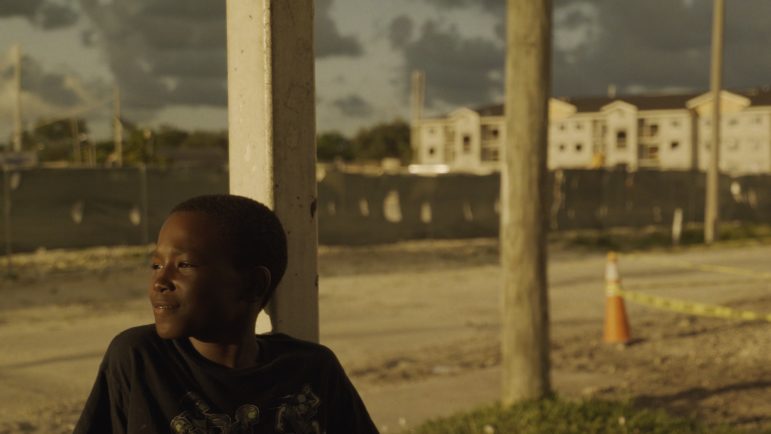
Razing Liberty Square tells a familiar story of how redevelopment brings gentrification and puts longtime residents at risk of being priced out of their homes. Esson started the production in 2017 and is on a time crunch to tell the story as it’s happening. At times she has taken emergency measures to continue working on the documentary.
“I had to borrow money. I used my savings,” she said. “I just kept going because you need the footage to put together a trailer. Only with a good trailer will you be able to raise the money.” Esson, who is director and co-producer with Ann Bennett, also had to ask members of her production team to take pay cuts or defer their compensation for a while.
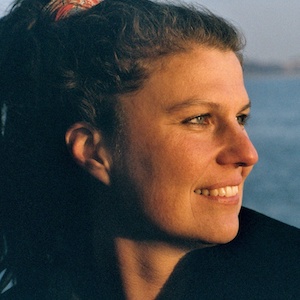
In 2018, Esson secured $20,000 from Catapult Film Fund, one of a handful of funders that consistently provide development grants. Those funds helped to jumpstart Razing Liberty Square and open doors with other grantmakers, she said. “The beginning is the hardest to find money, but once you get somebody like Catapult on, at least you’re on the map and the other funders take notice,” she said. Funders that stepped up to back the film include JustFilms, led by the Ford Foundation; the Knight Foundation; IDA; and NMCA’s Black Public Media.
Esson awaits ITVS’ decision on a grant application she submitted to an open-call solicitation for proposals. Razing Liberty Square received a favorable recommendation during the review process, including a nod from an external panel, ITVS said in a statement. “The film is being vetted for public funding eligibility to be followed by contract negotiations,” ITVS said.
Every filmmaker’s journey from research to fundraising and completion is different. With intensifying competition for dollars and airtime and increased scrutiny of how public media represents and serves communities of color, LGBTQ audiences and people with disabilities, filmmakers have been criticizing PBS for inequities in its funding and marketing decisions. In the spring, a group of filmmakers organized Beyond Inclusion to press PBS to disclose details about its program funding, including its investments in documentaries from BIPOC filmmakers.

Filmmaker Grace Lee, who criticized PBS in an essay published last fall, said the early-fundraising stage of her last production for PBS, the two-part documentary And She Could Be Next, was relatively smooth. Marjan Safinia, who produced and directed the documentary with Lee, had lined up early investors, including an individual donor and a family foundation.
That support bought them enough time to secure funding from the Sundance Institute; IDA’s enterprise documentary fund, which provided $100,000; and the Jonathan Logan Family Foundation, which gives grants to women filmmakers of color. Public TV grantmakers backing the film included the Center for Asian American Media and Latino Public Broadcasting — two of the CPB-funded consortia that make up the NMCA — and ITVS. And She Could Be Next focused on women running for political office. It debuted in the fall on POV, the PBS independent film series produced by American Documentary Inc.
‘Early money … is very risky’
Catapult, the film fund that backed Esson’s Razing Liberty Square, handpicks about 20 projects out of 1,000 applications annually. It’s hard to predict hits, like Wild Wild Country, which became a Netflix series, or Hail Satan?, a critical darling. Catapult-backed films that debuted on public television include The First Angry Man, a film about Howard Jarvis and his landmark California ballot measure Proposition 13, and A Thousand Cuts, about dwindling press freedoms in the Philippines. That documentary, which premiered at Sundance, aired on Frontline in January.
“When Catapult was launched, we surveyed the documentary landscape and identified an area in need of support,” said Megan Gelstein, senior program director. “In 2010, that was really development funding.”
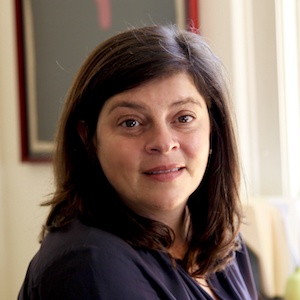
In 2015, Catapult created a “momentum grant” of up to $15,000 for filmmakers who had previously received support for development, Gelstein said. Those funds provide a “quick infusion of support when something unexpected comes up,” she said, such as the need to film extra scenes or hire an editor or animator. Catapult also offers a consulting grant available only to previous grantees.
Last year, Catapult’s leaders responded to a new need in the filmmaking community when they began offering research grants, providing $10,000 plus six months of mentorship and professional development to five filmmakers. These grants can help diversify the filmmaking community because they give people who have less access to cash time to hone their ideas without going broke, Gelstein said.
“This early money and support is very risky,” Gelstein said. “With the research grant, they’re just exploring an idea. There’s not necessarily an arc or characters or even access secured. But that space, when it’s unshaped and unformed, should be supported. Otherwise, we lose very talented voices in the industry because they get fed up, rightfully so.”

Frontline also has stepped up to fund research and development, said EP Raney Aronson-Rath. Some filmmakers don’t have enough money to jump-start their reporting, so she started saving money from Frontline’s core budget each year to support research.
“It’s so important to fund that stage,” she said. “In investigative journalism, you don’t always know the story you want to tell. We diversified our filmmaking pool, just by paying for development and the journalism.”
Aronson-Rath pointed to films featuring Jelani Cobb, a professor and staff writer for the New Yorker, who reported, wrote and produced Frontline’s 2016 and 2020 documentaries Policing the Police. Cobb’s work was also supported by the Frontline Journalism Fund.
When filmmakers go on the hunt for major grants, funders such as the IDA are one prospective funder. This stage of the process is also where federally funded grantmakers like CPB, PBS, NEA and NEH might jump in.
The IDA’s enterprise documentary fund offers grants of up to $100,000. It is funded by the John D. and Catherine T. MacArthur Foundation, a major funder of independent films on PBS through its support for Frontline, POV and other grantees. Simon Kilmurry, a former EP of POV who became IDA executive director in 2015, created the fund and led its grantmaking until he left the association this summer.
Kilmurry’s experience at POV — specifically the budget limitations that prevented the series from funding development — also prompted him to begin offering IDA grants of $15,000. The development grants are on hold through 2022, however. The public media system needs more grant programs that support under-represented filmmakers in the way that Chicken & Egg invests in women filmmakers, he said.
IDA also distributes $25,000 grants to women filmmakers of color through support from the Jonathan Logan Family Foundation, the nonprofit that supported And She Could Be Next.
‘Enormous effort’ of pursuing federal funds
Filmmakers aiming for national distribution on PBS prime-time series like American Masters or American Experience must also navigate a laborious funding process. Flannery, an American Masters biography of author Flannery O’Connor, cost $1 million to make. Elizabeth Coffman, an associate professor at Loyola University Chicago, and Mark Bosco, a Jesuit priest and professor at Georgetown University, initiated the production in 2011.

Through a personal connection with Ted Hardin, Coffman’s partner and the film’s cinematographer, Coffman contacted Bob Hercules, a Chicago native, producer and director who has produced several films for American Masters. His latest, Maya Angelou: And Still I Rise, debuted in 2017. Hercules became an EP for Flannery and helped Coffman get a meeting with Michael Kantor, EP of American Masters, a production of the WNET Group.
Kantor told Coffman he wanted to acquire the film for American Masters and premiere it on PBS, but there was a catch. The producers needed to apply for an NEH grant. Combining financial support from the series with NEH funding was the only way to meet the budget.
Coffman applied for an NEH grant in 2015 but was turned down. The rejection prompted the team to revise the script and rough cut before applying again. In 2016, NEH committed $150,000 to the production.
“If we think a project is really promising and has potential to be funded by NEH, we’ll go to the enormous effort of writing an NEH proposal and assembling a board of consultants and advisors,” said Stephen Segaller, WNET’s VP of programming. “But that adds a year to the process.”
Another three years passed before Flannery went on its film festival tour. The documentary premiered in 2019 at the Hot Springs Documentary Film Festival in Arkansas and screened in New Orleans and Austin, Texas. That fall, the film received the first-ever Library of Congress Lavine/Ken Burns Prize for Film, which comes with a $200,000 grant and other perks, including consultants from Florentine Films, Burns’ production company. Burns reportedly said that Flannery “made me go out and buy her books.”

“One of the great privileges of my life so far was winning that award from the Library of Congress,” Coffman said. “It helped pay off my credit card debt and helped us hire a publicist and do distribution.”
The producers worked with Kantor’s team and Burns as a consultant to shape the theatrical version of Flannery for public television. By the end of the process, additional support and resources came from the Mary Flannery O’Connor Charitable Trust, Emory University, Georgia College & State University and the Hank Center for the Catholic Intellectual Heritage at Loyola. The higher education institutions helped with library access, restoration of archival interviews with O’Connor and production costs.
“What was nice about the whole project is that the NEH and Library of Congress awards helped people like ourselves who weren’t Ken Burns,” Coffman said. “I want to provide hope to people who have not been able to get some of the bigger six-figure funding that my partner and I had not gotten in the past.”
Open call prompts sharpened critique
In February, PBS Chief Programming Executive Sylvia Bugg announced an “open call for emerging filmmakers” to support long- and short-form documentaries by BIPOC filmmakers. Recipients of the funds are to be announced this fall. Directors and producers interviewed by Current said they welcomed the initiative but that it didn’t address the needs and concerns of filmmakers who signed Beyond Inclusion’s letter to PBS CEO Paula Kerger.
The letter, released seven weeks after Bugg unveiled the open call during the Television Critics Association Winter Press Tour, called for equitable support for filmmakers who have been producing for public television for years.
In May, Bugg announced that PBS would invest more in general-audience programming from diverse filmmakers. But PBS declined to discuss specifics beyond Bugg’s remarks during PBS’ virtual Annual Meeting. PBS hasn’t responded to Beyond Inclusion’s request for data on its commitments of money and airtime to projects by filmmakers of color, according to Lee.
CPB’s grantmaking partners in the NMCA are stepping up to help meet the challenge. These include Black Public Media, the Center for Asian American Media, Latino Public Broadcasting, Pacific Islanders in Communications and Vision Maker Media. In boosting its annual funding to NMCA, CPB is now providing an additional $500,000 to each organization.
Francene Blythe-Lewis, executive director of Vision Maker Media, welcomed the funding boost but told Current that changes to public TV’s proposal review process would improve the system.
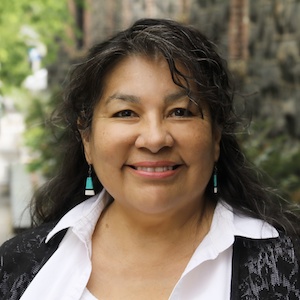
Vision Maker Media supports public television film projects about Native American cultures and experiences through acquisitions and grantmaking. Without groups like Vision Maker, public media funders with deeper pockets would ignore most proposals for films centered on Native Americans, she said. Public TV grantmakers who tend to support mostly white or well-established filmmakers could benefit from instituting blind reviews of applications.
As the former director of the All Roads Film Project at National Geographic, Blythe-Lewis used blind applications during the initial review. Temporarily omitting details such as names, filming locations, budget constraints and filmmaker credentials helped eliminate a bias between “John Smith” versus “Daniel LongSoldier,” or a filmmaker from Pine Ridge, S.D., versus one from Chicago.
“I eliminated those from the application, and all the committee got was the story at first,” Blythe-Lewis said. “If it was a good story, then we pulled in the rest of the proposal.”
“We’re possibly filtering out new, good talent inadvertently,” she said, describing public TV grantmakers. “For minority filmmakers, the criteria is extremely biased against them.”
What filmmakers want to see change
There’s no shortage of proposals for how to address the inequities in public television’s system for funding independent films.
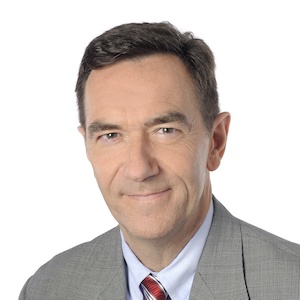
WNET’s Segaller pointed to a partnership with Firelight Media, a filmmaker support organization co-founded by Black filmmakers Stanley Nelson and Marcia Smith, to create In the Making, a series of shorts that follow the lives of artists. The station has also secured $300,000 from NEH for The Bigger Picture, a series of shorts about photography that’s being developed by Harvard professor Vincent Brown, an independent producer and Secrets of the Dead EP Stephanie Carter.
Historically, short films have received less funding, Segaller said, but online media consumption and viewers’ changing habits and expectations have created much more interest in the format.
On the other hand, filmmakers interviewed by Current pointed to a need for basic sharing of information, asking that public TV’s grantmakers convene more discussions about how their grant cycles work. Some suggested that funders explain their decision-making on film projects that win funding so that other applicants can learn from successful pitches.
Many want more public media grantmakers to become first and second funders of research and development. They cited Firelight Media as a model to replicate and expand. Firelight’s William Greaves Fund, formed in 2020, supports mid-career documentary filmmakers of color. Firelight also provides mentorships and other support to early-career filmmakers through its flagship Documentary Lab and Groundwork Regional Lab, and it runs an impact campaign fund to help engage audiences.
Lee proposes that PBS create a grant program offering unrestricted support for an annual class of mid-level filmmakers. Backed by foundations and individual donors, it would signal to funders that members of each class are talented and need more support. It would also help filmmakers market their work to audiences.
The CMSI study Stories for a Stronger Nation focused on independent filmmakers who initiate and complete their projects outside of PBS’ executive-produced series and maintain editorial control of their films. During the pandemic, many of these creative talents faced losses that threatened their financial stability, the co-authors reported. Among its recommendations for grant programs and infrastructural investments, the report calls for increased federal funding for public television, possibly through taxes on commercial streaming providers, media mergers or social media services.
La Cruise co-authored the report with Garry Denny, ITVS board chair and director of programming at Wisconsin PBS, and Patricia Aufderheide, a senior research fellow at CMSI, ITVS board member and professor of communication studies at American University in Washington, D.C. (Current is an editorially independent, nonprofit service of the American University School of Communication).

Beyond the gaps in its grantmaking for independent filmmakers, public TV’s production budgets are no longer competitive, the report states. “Public television is stuck at a budget level from 15 to 20 years ago,” one filmmaker told the researchers. “It’s not working to spend 10 years to make a movie while you’re putting funding together,” said another. Many public TV leaders interviewed by researchers agreed with these complaints and expressed frustrations about not having the resources they need to attract younger generations of viewers.
Safinia, director/producer for And She Could Be Next, said she also wants to dispel the myth that filmmakers are just complaining about money. She said there is “a prevailing attitude” among some public TV insiders who believe that filmmakers should “just get a real job if you don’t like this world as it is.” Though people are speaking up now, the prevalence of that attitude has likely forced filmmakers to suffer in silence, she said.
Filmmakers are no longer willing to keep biting their tongues while searching for a new path forward. Most told Current that they believe the system can be improved with a few innovative ideas, but belief has limits.
Correction: An earlier version of this article said that Katja Esson received “a few thousand dollars” from Catapult Film Fund in 2018 to jumpstart Razing Liberty Square. Catapult provided $20,000.


